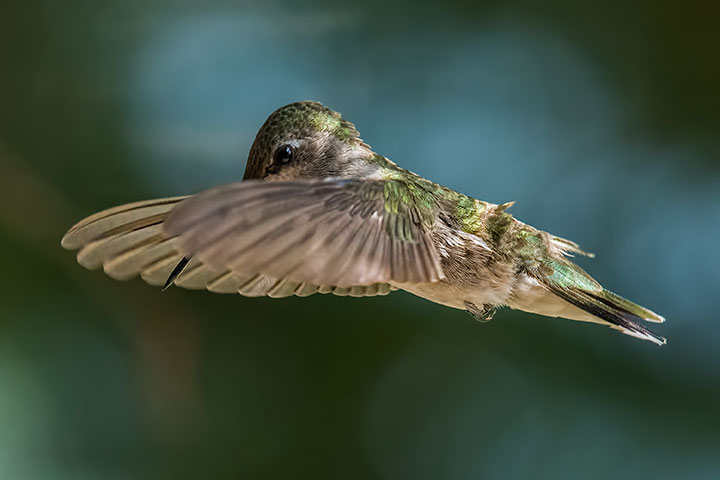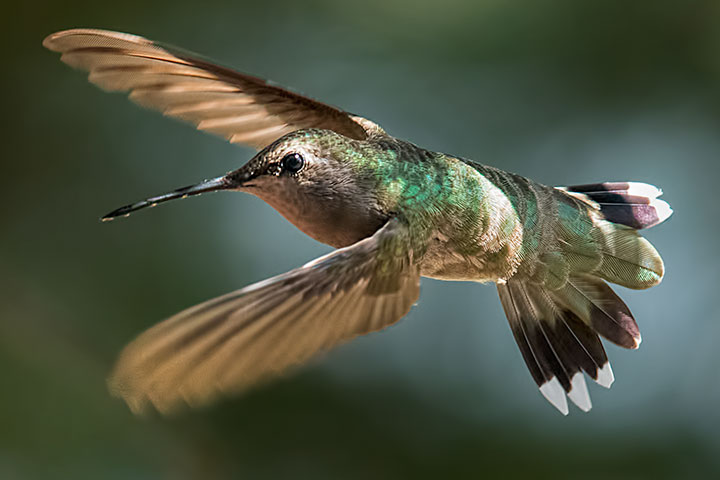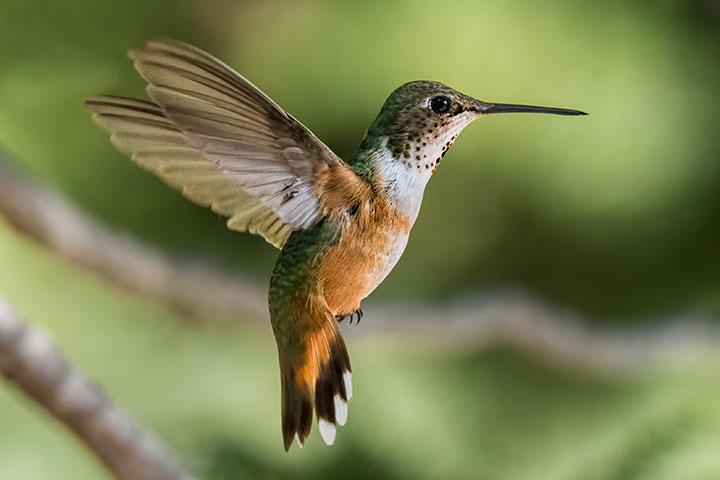Chalk it up to inattention. I know that we regularly get three hummingbird species during the warmer months: Calliope, Rufous, Black-chinned. Yet, I don’t think that I have ever noticed seeing all three in a single year. This year I have: Calliope, Rufous, (and other postings) and lately a Black-chinned.
I saw a Black-chinned male this last week, but failed to get a picture, so this link is to one from a previous year. However, I have been getting regular visits from a Black-chinned female.
Unlike males, female hummingbirds are not easy to distinguish. A good view of a spread tail can prove diagnostic, but it only happens occasionally. This female Black-chinned presents a typically uninformative view.
Here is a fleeting view of a spread tail. On the female Black-chinned Hummingbird, the black band on the tail is broken by central green feathers. On a Calliope or Rufous it is continuous.
A female Rufous Hummingbird visited about the same time. Even this side view shows the continuous black band.

These are really lovely photos. Such a treat to see hummingbirds up close. I have almost daily visits but they don’t seem to be able to get nectar from the types of flowers, mostly lillies, in my gardens. I am considering a feeder to provide them with something.